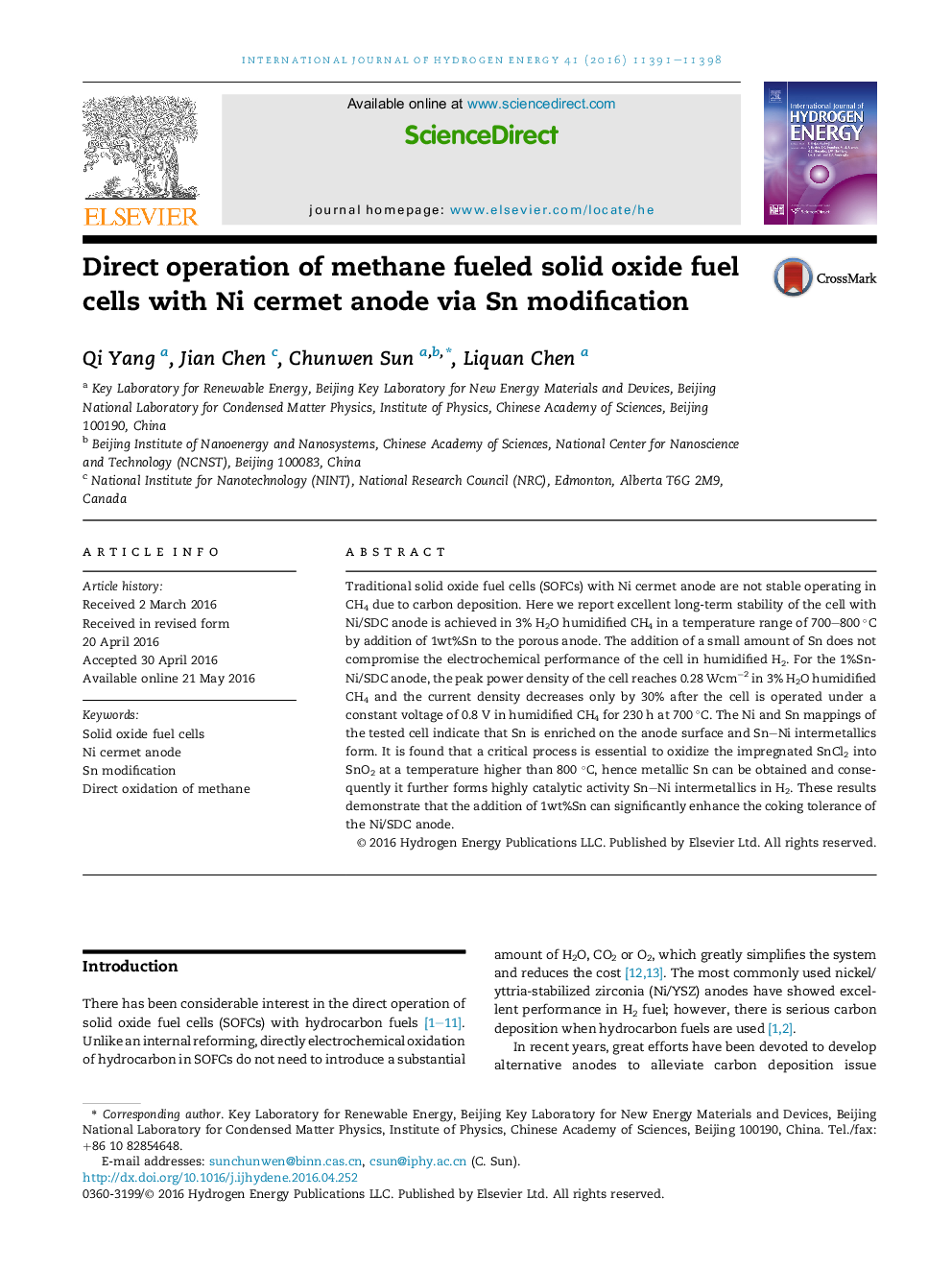| Article ID | Journal | Published Year | Pages | File Type |
|---|---|---|---|---|
| 1269571 | International Journal of Hydrogen Energy | 2016 | 8 Pages |
•The Sn modified Ni/SDC cermet anode cell was prepared.•The effect of calcination temperatures on the electrochemical performance was studied.•The Sn–Ni intermetallics form after calcining at 850 °C in air for 1 h and then reducing in wet H2.
Traditional solid oxide fuel cells (SOFCs) with Ni cermet anode are not stable operating in CH4 due to carbon deposition. Here we report excellent long-term stability of the cell with Ni/SDC anode is achieved in 3% H2O humidified CH4 in a temperature range of 700–800 °C by addition of 1wt%Sn to the porous anode. The addition of a small amount of Sn does not compromise the electrochemical performance of the cell in humidified H2. For the 1%Sn-Ni/SDC anode, the peak power density of the cell reaches 0.28 Wcm−2 in 3% H2O humidified CH4 and the current density decreases only by 30% after the cell is operated under a constant voltage of 0.8 V in humidified CH4 for 230 h at 700 °C. The Ni and Sn mappings of the tested cell indicate that Sn is enriched on the anode surface and Sn–Ni intermetallics form. It is found that a critical process is essential to oxidize the impregnated SnCl2 into SnO2 at a temperature higher than 800 °C, hence metallic Sn can be obtained and consequently it further forms highly catalytic activity Sn–Ni intermetallics in H2. These results demonstrate that the addition of 1wt%Sn can significantly enhance the coking tolerance of the Ni/SDC anode.
Graphical abstractExcellent long-term stability of the cells with Ni/SDC anode is achieved in 3% H2O humidified CH4 in a temperature range of 700–800 °C by addition of 1wt%Sn to the porous anode calcined at 850 °C in air for 1 h before reducing in wet H2.Figure optionsDownload full-size imageDownload as PowerPoint slide
